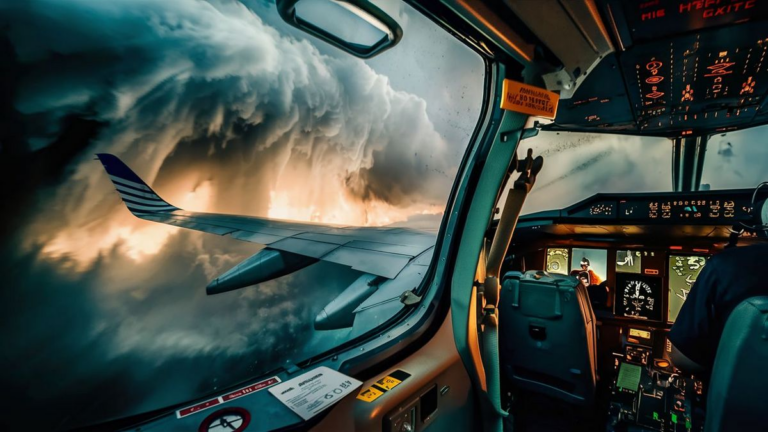When it comes to aviation safety, turbulence is a topic that often sparks concern among travelers. Understanding the dynamics of turbulence and its potential impact on flight safety is crucial for both passengers and aviation professionals alike.
The Nature of Turbulence
Turbulence refers to irregular air movement characterized by eddies and currents. It can be caused by various factors, including atmospheric conditions such as wind shear, thunderstorms, or even the wake turbulence generated by other aircraft.
Effects on Flight
While turbulence can be unsettling for passengers, it is essential to note that modern aircraft are designed to withstand a significant degree of turbulence safely. Pilots undergo rigorous training to handle turbulent conditions and are skilled at navigating through them to ensure a smooth flight experience.
Flight Safety Measures
Airlines and regulatory authorities have stringent safety protocols in place to minimize the risks associated with turbulence. These measures include thorough pre-flight weather briefings, onboard weather radar systems, and the implementation of turbulence avoidance procedures.
Structural Integrity
One common concern regarding turbulence is its potential to compromise the structural integrity of an aircraft. However, commercial airplanes are built to withstand forces far beyond what turbulence typically generates. Manufacturers subject aircraft to rigorous testing to ensure they can withstand extreme conditions.
Human Factors
While turbulence itself is not typically a direct cause of aircraft accidents, human factors can play a significant role. Pilot error, mechanical failures, or other unforeseen circumstances can exacerbate the effects of turbulence and lead to accidents.
Passenger Safety
Passenger safety is paramount during turbulent conditions. Airlines advise passengers to keep their seatbelts fastened while seated and to follow crew instructions carefully. Additionally, flight attendants are trained to secure cabin items and assist passengers as needed during turbulent encounters.
In conclusion, while turbulence can be unsettling, it is a normal and manageable aspect of air travel. Modern aircraft are designed and operated with safety as the top priority, and pilots are well-equipped to handle turbulent conditions effectively. By understanding the nature of turbulence and the safety measures in place, passengers can feel confident in the safety of their flights.
Frequently Asked Questions
Here are some common questions related to turbulence and its effects on aviation:
| Question | Answer |
|---|---|
| 1. Can turbulence cause a plane to crash? | Turbulence itself is not typically a direct cause of aircraft accidents. Modern aircraft are designed to withstand turbulent conditions, and pilots are trained to navigate through them safely. |
| 2. How do pilots handle turbulence? | Pilots undergo rigorous training to handle turbulent conditions. They utilize various techniques, including adjusting altitude and speed, to minimize the effects of turbulence on the flight. |
| 3. Is turbulence dangerous? | Turbulence can be unsettling for passengers, but it is not inherently dangerous. Commercial aircraft are built to withstand turbulence, and safety measures are in place to ensure passenger well-being. |
| 4. What should passengers do during turbulence? | Passengers should keep their seatbelts fastened while seated and follow crew instructions carefully. Remaining seated and belted reduces the risk of injury during turbulent encounters. |
Factors Affecting Turbulence Severity
Several factors can influence the severity of turbulence experienced during a flight:
- Atmospheric conditions, including wind speed and direction.
- Proximity to mountains or large bodies of water, which can create turbulence-inducing airflow patterns.
- Jet streams and weather systems such as thunderstorms, which can cause significant turbulence.
Advanced Aircraft Technology
Advancements in aircraft design and technology have contributed to improved safety and comfort during turbulent conditions:
- Modern aircraft are equipped with advanced weather radar systems that allow pilots to detect and avoid turbulent areas.
- Enhanced aerodynamic features and materials increase the stability and resilience of aircraft, minimizing the effects of turbulence on flight.
- Computerized flight control systems assist pilots in maintaining stability and control, especially during turbulent encounters.
See also:






